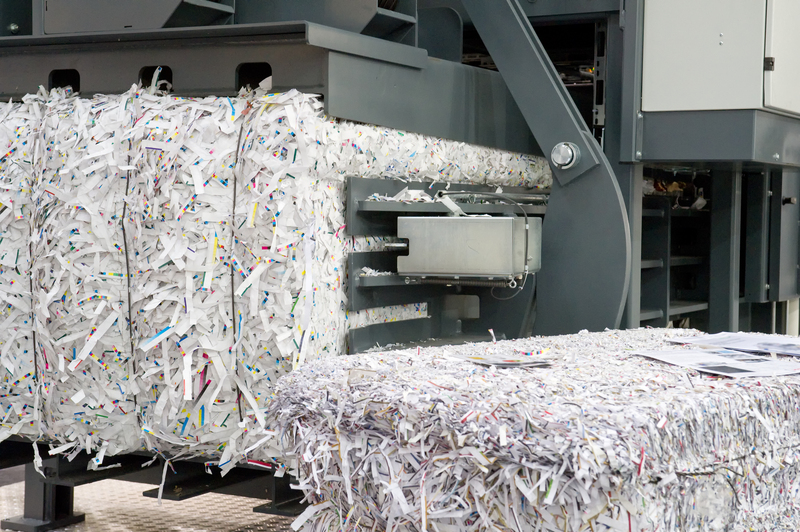The Link Between Consumer Habits and Effective Packaging and Cardboard Disposal
In an era increasingly defined by environmental awareness, consumers are making everyday choices that shape not only their own lives but the health of our planet. Among these choices, how we handle packaging--particularly cardboard--and our habits around disposal and recycling, have become critical factors. Understanding the connection between consumer habits and effective packaging and cardboard disposal can empower individuals and businesses alike to adopt eco-friendlier, more sustainable practices.
Understanding Modern Consumer Habits
Consumer behavior has shifted dramatically in the last few decades. Online shopping, fast-moving consumer goods, and the demand for convenience have escalated the volume of packaging waste worldwide. The rise in e-commerce alone has fueled an unprecedented need for packaging materials, especially cardboard.
- Convenience and Speed: Consumers now expect products delivered swiftly, often individually packaged which increases cardboard usage.
- Packaging Preferences: There is a growing preference for eco-friendly, biodegradable, or recyclable packaging among sustainability-conscious buyers.
- Awareness of Environmental Impact: Many consumers now consider the carbon footprint of their packaging and aspire to recycle responsibly.
Statistics Highlighting Key Trends
Recent studies suggest that the average household receives up to 60 cardboard packages annually from online orders alone. While an estimated 80% of these boxes are recyclable, only about 65% are actually properly recycled. There remains a significant gap between eco-friendly intentions and actual disposal habits.

Packaging: From Necessity to Environmental Concern
Cardboard has become the packaging material of choice due to its versatility, strength, and recyclability. It is used to securely transport everything from electronics to groceries.
- Corrugated cardboard boxes protect fragile items and are lightweight.
- Folding cartons and carton boards are commonly used for food and retail products.
- The simplicity of recycling cardboard distinguishes it from materials such as plastic or styrofoam.
Challenges in Cardboard Packaging
While cardboard is recyclable, improper disposal leads to contamination and landfill buildup. Some factors include:
- Leaving greasy food residue or excessive tape on boxes.
- Placing cardboard in the wrong recycling bin.
- Over-packaging, leading to unnecessary waste.
The environmental impact of packaging choices is directly linked to how well consumers manage their cardboard waste.
The Lifecycle of Cardboard Packaging
To understand effective cardboard disposal, it's crucial to consider the entire life cycle of a cardboard box:
- Production: Trees are harvested and processed into pulp, consuming water and energy.
- Manufacturing: Pulp is shaped, pressed, and treated, forming cardboard sheets and boxes.
- Distribution & Use: Boxes serve their primary function in protecting goods.
- Disposal & Recycling: Box enters the waste stream, ideally separated for recycling.
- Repurposing: Recycled cardboard is used to create new products, reducing resource extraction and emissions.
Every consumer decision--right from purchasing to disposal--affects this cycle.
Best Practices for Cardboard Disposal
Effective packaging disposal is not just about tossing boxes in the recycling bin. It involves a series of steps that maximize the chances of materials being reprocessed and reused.
Steps for Responsible Cardboard Disposal
- Flatten Boxes: Always flatten cardboard to save space and ensure collections are efficient.
- Remove Non-Cardboard Elements: Eliminate plastic wrapping, packing peanuts, and excessive tape or labels.
- Keep Cardboard Dry: Wet or greasy cardboard cannot be recycled and often ends up in landfills.
- Adhere to local recycling guidelines: Some communities have specific days or bins for cardboard collections.
- Encourage Reuse: Before recycling, consider reusing boxes for storage, moving, or crafts.
Why Proper Cardboard Disposal Matters
- Reduces landfill usage: Cardboard accounts for a significant portion of municipal solid waste.
- Saves energy and resources: Recycling one ton of cardboard saves over nine cubic yards of landfill space and 46 gallons of oil!
- Decreases greenhouse gases: Landfilled cardboard breaks down anaerobically, emitting methane, a potent climate-changing gas.
The Consumer's Crucial Role in Sustainable Packaging Use
The success of recycling initiatives hinges on active consumer participation. Here are some ways that consumer behaviors influence cardboard recycling outcomes:
- Purchase Decisions: Opting for brands that use minimal, recyclable, or compostable packaging promotes demand for sustainable options.
- Proactive Recycling: Taking the time to prepare cardboard ensures material quality and reduces contamination.
- Community Involvement: Consumers who advocate for better local recycling programs contribute to broader environmental improvement.
Building Environmentally Smart Habits
Creating change starts with simple, consistent actions at home and within communities. To encourage better packaging disposal habits, try:
- Setting up clearly labeled recycling stations at home and work.
- Educating family, friends, and colleagues about best practices for cardboard disposal.
- Supporting businesses that champion sustainable packaging solutions.
How Businesses Influence Consumer Recycling Habits
Manufacturers, retailers, and e-commerce platforms play a sizeable role in promoting effective packaging and cardboard recycling. By designing for recyclability, minimizing excess materials, and communicating clear disposal instructions, businesses can guide consumers toward better waste management.
Key Strategies for Effective Cardboard Packaging
- Use recyclable and recycled-content cardboard
- Print disposal or recycling instructions directly on the package
- Embrace minimalist design to reduce unnecessary materials
- Take-back and reuse programs for packaging
The Role of Eco-labels and Certifications
Look for symbols such as the Mobius Loop (recyclable) or FSC certification (certified sustainable forest management). These increase consumer confidence and awareness, making it easier to identify responsible products and packaging.
The Circular Economy and the Future of Cardboard Packaging
A shift towards a circular economy--where packaging is designed to be reused, recycled, or composted--relies on a seamless loop between production, usage, and disposal.
- Consumers must continue to demand eco-friendly packaging and responsibly dispose of it.
- Manufacturers must invest in innovative materials and designs that are both effective and sustainable.
- Governments and municipalities need to improve recycling infrastructure and raise awareness.
In this model, cardboard never becomes waste; instead, it is perpetually returned to the manufacturing stream, lowering emissions, saving trees, and conserving energy.
Common Myths About Cardboard Recycling--Debunked!
- Myth: "If cardboard is in the bin, it will get recycled."
Fact: Only clean, dry, uncontaminated cardboard is typically recycled. Pizza boxes or wet boxes should be composted or landfilled. - Myth: "Tape and labels don't matter."
Fact: Excessive non-cardboard materials complicate processing and reduce finished product quality.
The Environmental Benefits of Effective Cardboard Disposal Habits
When consumers and businesses get packaging disposal right, the benefits are far-reaching:
- Reduced greenhouse gas emissions
- Less pressure on landfills and ecosystems
- More trees saved--recycled fibers reduce the need for virgin pulp
- Lower costs for municipalities due to less waste management burden
Effective packaging and cardboard disposal is an achievable way for everyone to play a part in saving the environment.

Tips for Developing Smarter Consumer Habits Around Packaging and Cardboard
- Choose products with minimal, recyclable packaging wherever possible.
- Store boxes for bulk recycling drop-offs if your curbside program has limits.
- Participate in retailer "recycling take-back" programs to ensure boxes are properly reprocessed.
- Get creative: Reuse boxes for shipping, crafts, or storage to extend their lifecycle before disposal.
Conclusion: Shaping a Sustainable Future Through Conscious Consumer and Packaging Choices
The link between consumer habits and effective packaging and cardboard disposal is undeniable. As buyers, our decisions and actions--what we buy, how we unpack, and the way we recycle--directly impact waste streams and environmental outcomes. Practicing mindful consumption and responsible recycling can transform cardboard packaging from a potential pollutant to a perpetual resource within a thriving circular economy.
By staying informed, advocating for sustainable practices, and working collaboratively with businesses and communities, we can ensure that effective packaging disposal becomes second nature--a daily act that protects our planet for generations to come.
Let's all make the link--and take action--starting today.
```